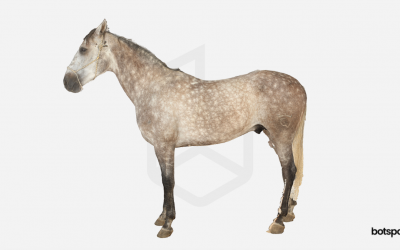WHAT’S BEST: PROFESSIONAL 3D SCANNERS VS SMARTPHONES
With the rapid evolution of 3D scanning technology, its usage, both individually and industrially, has sky-rocketed. This advancement has resulted in the technology being made increasingly accessible to a wide range of users. On top of professional scanners, it is now possible to 3D scan almost anything with your own smartphone using a variety of smartphone apps. This leads to the question: what is the best option for you or your business? Professional scanning solutions, like those provided by botspot, or simply using your own phone?
This article will delve into the key differences between these two approaches, examining their advantages, limitations and unique experiences they bring.
ACCURACY & PRECISION
Professional scanners are unrivaled in the accuracy and precision of the data collected. Their advanced technology and systems can overcome any object limitations to produce the highest quality scans possible. This also saves a lot of time as very little “clean up” is necessary to fix the scans.
For example, botspot scanners are known for their precision and depth, catering to applications where high accuracy is paramount. Our botscan NEO can produce scans with a measurement accuracy of ±0.1mm, completed in 0.01 seconds and automatically generates a 3D model without user input.
In this respect, smartphone 3D scanning struggles to match the precision of professional scanners. The limited hardware and software capabilities of smartphones can result in less accurate representations, especially for small or intricate objects, or human beings. The success of a 3D scan largely depends on the lighting conditions, the object’s transparency or glossiness, and how much the object moves. While these challenges are easily overcome with professional scanners, they must be very carefully considered when scanning with a smartphone. A lot of time is then needed to clean up the scans to make them ready for use.
PROFESSIONAL WORK PROCESSES AND SCALABILITY
Another aspect that should not be neglected is the expectations of the workflow, as it makes a big difference whether I am occasionally working on a hobby project or am under the professional pressure of series production.
Especially when high throughput is required, there is no time for manual work – be it a manual scanning process using your smartphone or the necessary rework. Because let’s not kid ourselves: neither of the two technologies delivers perfect results. The question is rather how much time a professional 3D artist needs to turn a raw scan into a cleaned-up 3D model that can actually be worked with.
So it’s not just about saving time in the scanning process, but above all about the additional days (or in some cases even weeks) of manual rework that you subsequently save by using a calibrated full body scanner like the botscan NEO and this saving budget.
ACCESSIBILITY AND AFFORDABILITY
One of the most significant differences between 3D scanning with a smartphone and a professional scanner lies in accessibility and affordability. Smartphones with the appropriate cameras and sensors are becoming increasingly available, while more and more 3D scanning smartphone applications are being released. This means that almost anyone has the ability to create a 3D scan for free or at a very low cost.
On the other hand, buying or renting professional scanners or scanning services often come with a higher price tag and may require specialized knowledge for operation. While they offer unparalleled precision and detail, the initial investment and learning curve may deter casual users.
PORTABILITY AND EASE OF USE
Smartphones take the spotlight when it comes to portability and ease of use. They can fit in your back pocket, making them ideal for scanning on-the-go. 3D scanning smartphone applications can be intuitive and easy to understand, without any need for official training.
Professional scanners tend to be bulky and require a dedicated workspace, depending on the type of scanner used. Special training may also be required to operate the scanner. While these issues can be overcome by purchasing a specialized scanning service rather than buying a scanner, in terms of portability, the smartphone shines.
APPLICATION DIVERSITY
Both smartphone and professional 3D scanning cater to a wide range of applications, but their strengths align with different use cases. Smartphone scanning is well-suited for applications like augmented reality, 3D printing, and hobbyist projects. The accessibility and ease of use make it an excellent choice for those exploring the world of 3D scanning for the first time.
Professional scanners find their niche in industries where precision and accuracy are paramount, such as reverse engineering, quality control, and medical imaging. Their ability to capture intricate details makes them indispensable tools in fields that demand the highest level of fidelity in 3D models.
CONCLUSION
In the evolving landscape of 3D scanning, the choice between using a smartphone or a professional scanner ultimately depends on the specific needs and goals of the user. Smartphone scanning offers accessibility and convenience, while professional scanners deliver unmatched precision and accuracy. The complexity and sophistication of botspot scanners, while presenting challenges in affordability and application, make them ideal for large organizations and industries ready to invest in top-tier technology. And while this technology is of course far too expensive for home use, the acquisition costs are quickly redeemed for professional users by the resulting increases in model quality and efficiency.
As technology continues to advance, we can expect both approaches to develop further, providing users with an array of options to suit their unique requirements in the fascinating world of 3D scanning. Stay tuned for more insights into how botspot is shaping the future of 3D scanning technology.



